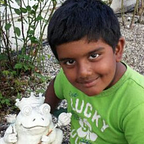Do Early Birds Really Catch the Worms?
In this article, I will be informing you about ways in which humans and birds interact with each other, both positively and negatively. I hope you enjoy this article and hopefully gain a newfound perspective on the negative impacts that we have on birds as well as what we are doing well. In addition to this, I hope you are inspired to make an impact in your society to help birds as well!
In order to better understand the challenges that birds face, we need to learn more about the main processes that occur in their everyday lives. Firstly, a bird needs to make sure that it has sufficient food and water to live, it does this by foraging for fruit, snapping at fish, swooping down to pick up rodents, or competing for dead remains of food. These are just four of the several different ways in which birds feed and get the energy that they need to survive. However, these methods of feeding are being impacted negatively by many different factors, the major one being human activity. One common form of impact that comes to mind is the installation of bird feeders in houses all over the world. It is thought to be beneficial to birds as it gives them a reliable food source that they can frequently come back to. While I agree with this perspective, birds that were once wild will eventually become domesticated thanks to the abundance of food that humans have to offer. This possibility as well as the evolution of canines can be categorized by one theory, flight distance. It is the concept that animals keep a certain distance between themselves and humans. Those who maintain a safe distance will remain wild, whereas those who are attracted by resources and motivating factors that humans possess will eventually develop a new lineage of domesticated animals. This is how domesticated dogs came to be, and this is how birds will come to be if humans continue to spoil birds with food instead of allowing them to find it in their own natural environments, places where they will not only remain wild but will also be at a lower risk of catching overcrowding disease, as well as being hunted.
The Golden State can learn from the Garden Island
On a recent trip to the island of Kauai, I observed so many chickens that looked like wild variants of the domesticated ones. After doing a little bit of research, I found that two major hurricanes had caused domesticated chickens to be freed from farms and independently bred with wildfowl for many generations in order to produce wild chickens that roam forests and find whatever food they can in order to survive.
However, I was wrong. The chickens I saw on the road weren’t wild, they were feral! But what exactly does this mean? Feralisation is essentially a process where domesticated animals become wild again. Even though it is thought of as being the opposite of domestication, there are some notable differences to be accounted for. The major difference between the two is the phenotype, or outside appearance of the chicken. The feathers are not only similar to wild chickens but also possess domestic traits that descend from those of the red junglefowl, the main ancestor of today’s chickens. There are also three rapidly growing genes in feral chickens which are linked to comb size, a sex-linked trait that is not under pressure in domestic chickens but causes feral chickens to lay eggs less frequently than domestic chickens.
These facts were extremely interesting to me, however, I wanted to learn more about their behaviors and how the feralisation might have improved their resilience to humans compared to before. I ran some experiments in the backyard of our hotel and put bird food in a variety of different places, such as the ground, in the bird feeder, and on a nearby table. I found that the chickens were very intelligent and ate from the ground, feeding on the spilled food that java sparrows fought over when eating from the bird feeder. Northern cardinals were also intelligent and decided to feed on top of the table, a place where there was no competition for food, and had the entire food source to themselves. However, on the last day of our trip, my family and I decided to try and feed the birds pieces of bread and ground biscuits. The chickens were extremely hesitant at first to eat the bread and the roosters actually waited for the hens to try it before taking a bite. In fact, the powder remained untouched by the usual red-crested cardinals and java sparrows. This discovery was eye-opening for me as these birds were reluctant to eat human food and had finally become wild and free again.
I feel that the feral chickens of Kauai can act as an example to the rest of the world, that birds can flourish without human intervention, the factor that has arguably led to the demise of several bird species on its own. In conclusion, I feel that the best way to help our birds is to avoid disrupting their lives and unnecessarily spoiling them with our food, and leading them to domestication which eventually leads to the slaughtering of these animals in order to feed millions of people all over the world. So, if you are passionate about birds, I hope this article was informative and can hopefully convince you to use these strategies in your everyday lives to help these birds flourish and thrive for many generations to come!
